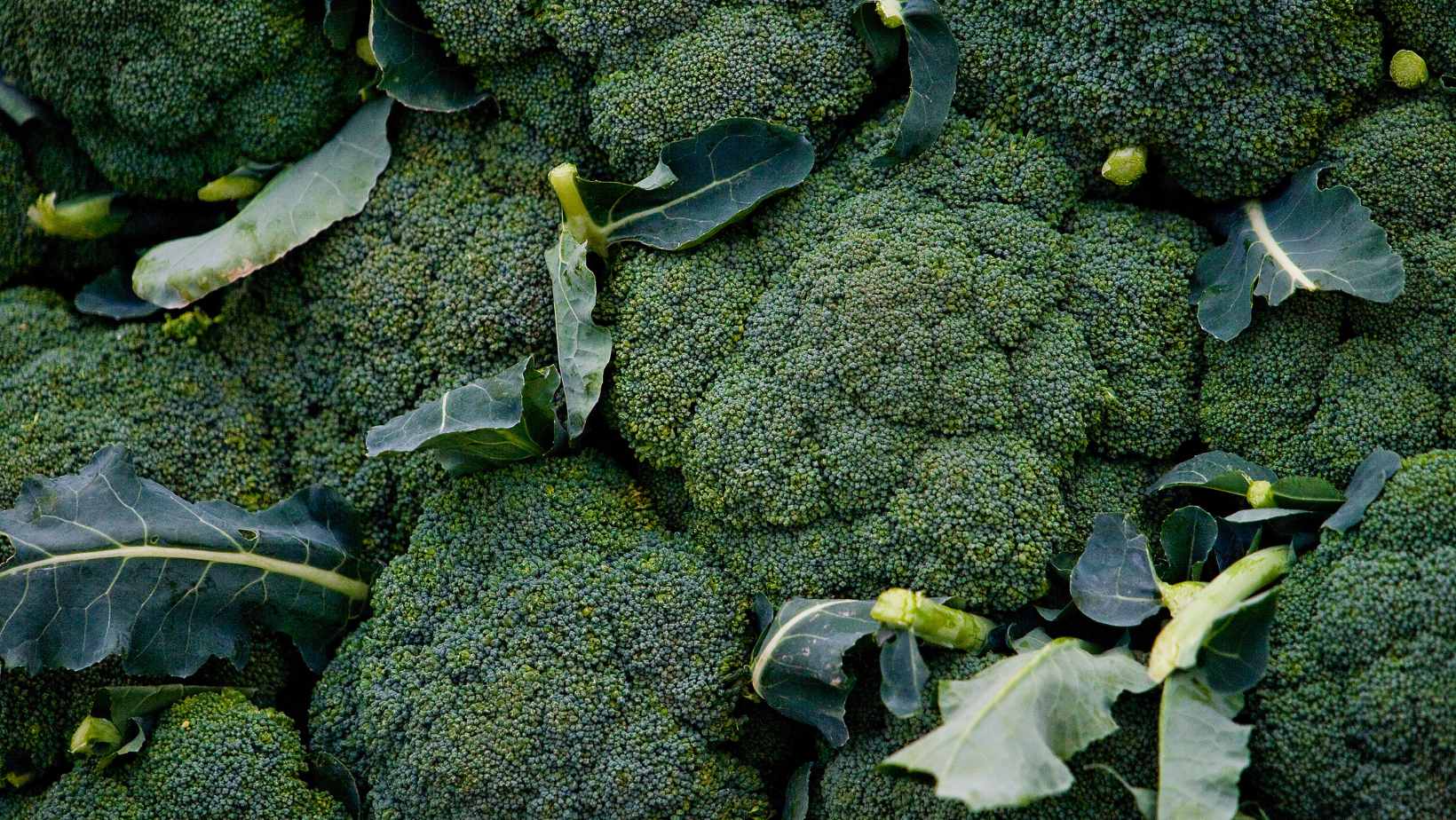
To prepare yourself for drawing broccoli, gather the necessary materials, set up your workspace, and carefully observe your broccoli. Getting organized with these sub-sections will save you time and help ensure a successful drawing.
Gathering Materials
To properly prepare for drawing broccoli, one must gather all necessary materials. Here are some key points to consider when preparing:
- Start by choosing a variety of broccoli to draw, considering factors such as shape and texture.
- Ensure that your drawing surface is appropriate for the medium you plan to use, whether it be paper or canvas.
- Select your drawing tools carefully, including pencils, pens, charcoal or paints depending on your style and preference.
- Gather reference materials such as photographs or live broccoli specimens for accurate representation.
- Consider lighting when gathering materials; ensure proper illumination from a natural light source or artificial lighting setup.
- Make sure to have ample time and focus devoted to the drawing process in order to create a piece that you can be proud of.
It’s important not to overlook any details when gathering materials for your broccoli drawing. Consider unique aspects like color variations or stem thickness that will make your piece stand out. By taking these extra steps, you can ensure an end result that truly captures the essence of this versatile vegetable.
Don’t miss out on the opportunity to create a true piece of art with your broccoli drawing. By properly gathering your materials in advance and giving yourself enough time to complete the project with care and attention, you’ll be on track towards achieving success. So why wait? Start prepping today! Get your pencils ready, it’s time to draw some broccoli and pretend it’s your favorite food.
Setting Up Workspace
The workspace is a crucial part of any drawing process. To ensure that your work is done efficiently, it’s important to set up an optimal workspace.
Here’s a 4-step guide for creating the perfect workspace for drawing broccoli:
- Clear out the area where you plan on working, making sure there are no distractions that would take away from the task at hand.
- Bring in all necessary tools and materials such as pencils, erasers, and paper.
- Make sure there is ample lighting so you can see details clearly. Natural light works best but if not available you can use artificial sources like lamps or desk lights.
- Create a comfortable seating area with good ergonomics to avoid posture problems or discomfort while working for extended periods of time
Remember to take frequent breaks and stretch during long periods of sitting.
In creating an optimal workspace for drawing broccoli, consider using a range of coloured pencils and blending mediums like gamsol or white spirit.
Did you know that Michelangelo famously said ‘If people knew how hard I had to work to gain my mastery, it wouldn’t seem so wonderful at all’? Even the most famous artists understand the importance of putting in effort towards preparation!
Watching broccoli is like watching paint dry, except broccoli is less interesting and never dries.
Observing Broccoli
Careful Observation of Broccoli
Observing the intricate details of broccoli is crucial in drawing it realistically. Pay attention to its florets, stems, and leaves. Notice the unique shapes, sizes, and textures as well as the patterns that emerge from their arrangement.
By observing these essential features carefully, you can translate them onto paper and create a realistic broccoli drawing. It’s vital to focus on specific details that give validity to the depicted image.
One crucial aspect is correctly capturing each section’s shape and size that needs to be proportionally correct with one another. Another key detail includes creating depth by paying attention to shading and illustrating light reflecting off different areas of this nutritious vegetable.
To unfold an excellent drawn image of broccoli, a keen eye to observe every aspect must be nurtured. Aspiring artists are encouraged to note every observation as they draw- the darker shade around the stems’ edges or significant curves among the florets.
With dedication towards perfecting observation skills for drawing accurately, one step resulting in similar success would be overcoming imperfections during their observations while doing so diligently.
Observation plays a central role in nurturing artistic skills through continuous practice and analysis.
Get ready to turn your artichoke-shaped broccoli into a masterpiece with these basic shapes.
Basic Shapes in Drawing Broccoli
To draw broccoli, you need to start with a basic shape. In order to simplify the process of drawing broccoli, focus on identifying its essential parts. This section will guide you in sketching basic shapes and recognizing details of broccoli shape to ensure its accurate representation.
Sketching Basic Shape
When it comes to drawing vegetables like broccoli, learning to sketch basic shapes is crucial. It provides the structure and foundation for the rest of the drawing process.
In order to sketch basic shapes of broccoli, follow these six simple steps:
- Begin with an oval shape for the top of the broccoli head
- Add a series of smaller ovals around the top oval to represent florets
- Draw a long thin stem coming out from under the broccoli head
- Add a few small leaves or fronds at the base of the stem
- Sketch in faint pencil lines indicating texture and detail on each floret and along the length of the stem
- Erase any unwanted pencil marks and darken your final outline and shading
To enhance your sketches even further, try experimenting with different angles, lighting, and perspective. For example, you could draw broccoli from above or below or add shading that represents shadows cast from light sources. Adding background details such as plates or other foods can help create context too.
Start practicing your drawing skills today and watch as they improve over time. Don’t miss out on this opportunity to express yourself creatively through art – give it a try!
Get ready to broccoli-roll in laughter as we dive into the nitty-gritty of identifying the unique shapes and details of this cruciferous vegetable.
Identifying Details of Broccoli Shape
Broccoli’s Unique Characteristics
To distinguish broccoli’s shape, it is essential to identify its basic shapes. Broccoli consists of four main shapes: a long stem, tightly packed clusters of florets, small leaves extending from the stems and florets, and large leaves branching out from the stem base.
Below is a table outlining the identifying details of broccoli shape:
| Shape | Description |
| Stem | Long and slender with diamond-shaped patterns on its outer layer. |
| Florets | Tightly packed clusters with small curvy cones on the top and thin stalks at the bottom. |
| Small Leaves | Thin elongated structures that attach to both the stems and florets. |
| Large Leaves | Circular top leaves that branch outwards from the stem’s base. |
In terms of texture, broccoli has a bushy appearance and feels firm when grasped. Its color ranges from deep forest green to lighter shades with blue or purple tinges.
Interestingly, aside from its unique characteristics above, did you know that broccoli is among the most nutrient-dense vegetables globally? One study published in The Journal of Nutrition confirms that broccoli may help improve heart health due to its high levels of antioxidants like vitamin C and sulforaphane.
Be warned, adding too much detail to your broccoli drawing may result in it becoming a vegetable with commitment issues.
Adding Details to Broccoli Drawing
To add more life and detail to your broccoli drawing, you need to focus on its specific elements. With “Adding Details to Broccoli Drawing” as your guide, you can achieve a more realistic and engaging outcome. In this section, we will explore the sub-sections of “Drawing Broccoli Leaves,” “Adding Texture and Shadows,” and “Highlighting Broccoli Details” as solutions to enhance your drawing.
How to draw broccoli
Drawing the intricate details of broccoli’s foliage
To draw broccoli leaves professionally, start by determining the right placement and shape of the leaves. Then, outline the central vein of each leaf, followed by drawing pairs of branch veins on either side. Finally, accentuate the edges of each leaf to add dimension.
4-Step Guide to Drawing Broccoli Leaves:
- Determine leaf position and shape
- Outline central vein
- Create pairs of branch veins
- Highlight leaf edges for added dimension
Adding Details to Broccoli Drawing:
To further enhance your broccoli drawing’s detail, focus on creating varying levels of shading through different hatching techniques. Additionally, adding drawn or painted dew drops can create a realistic and dynamic effect.
A True Story:
As an art student, I struggled with perfecting my still-life depictions until I tackled drawing broccoli. Using diverse hatching techniques and highlighting its wetness with tiny water droplets, I created a life-like representation that earned me my professor’s praise.
Finally, your broccoli can go from looking like a cartoon sticker to a realistic vegetable that even your grandmother would approve of.
Adding Texture and Shadows
The process of enhancing the broccoli drawing with surface details and depth is crucial. Below are five steps that can be followed to add texture and shadows to the image:
- Delineate the outline: Start by outlining the broccoli’s shape with a fine pen or pencil, ensuring that it is precisely proportioned.
- Add surface texture: Employ stable vertical lines in various patterns, adding patterns from left to right or up to down while keeping them consistent with the flow of the stem.
- Create shading contrast: Begin adding shadows underneath each floret using small circular motions with a sharper pencil or darker paint tone.
- Handle highlights: Spot-highlight small areas of leaves with white acrylic dabs and a thin brush for creating an enhanced illusion of 3D depth.
- Fine-tune your image quality: Lastly, erase any visible workspace debris from your sketch area and smoothen out harsh edges by blending the color throughout your drawing gently.
While executing these steps, keep perfection in mind as slight errors will distract from your final piece’s high quality, although sophistication and finesse are vital attributes when adding detail.
It is essential not to forget about natural lighting when integrating texture and shadow into your work that adds interest and intrigue by showing off characteristics rendered through light exposure. Capturing this effect can ultimately make or break a visually stunning artwork piece; this leads us towards our next step, which helps bring everything together beautifully!
I recall trying such a session at an art class years ago where instructional guidance was limited; but after following some expert guidance on how to execute detailing technique in my artwork projects I made vast improvements like anything! This practise gradually turned into my long-term creative pursuit as it unlocked newfound creativity within me – now, I revel in brainstorming from all corners of my imagination to get unique blending techniques for all my detailed artworks painstakingly!
Get ready to fall in love with broccoli all over again as we shine a spotlight on its intricate details.
Highlighting Broccoli Details
To enhance the intricacy of your broccoli drawing, magnify its details with sophisticated strokes. Here’s how you can give your broccoli an added flair by highlighting its features.
| Texture | Sketch a variety of textures on each floret to emulate the natural look of broccoli. |
| Shading | Add shading to accentuate depth and dimensionality that gives a 3D feel. |
| Hue Contrast | Make broccoli more realistic by painting different shades of green against each other. |
Incorporate smaller details like the uneven surface at the bottom and the rough tip of each floret. By accurately adding intricate speckles or dots that suggest seeds, you make your drawing life-like.
Once when I drew a platter of vegetables for my vegan client, I made sure to use these techniques. The result was more than satisfactory; it delighted my client so much that they requested several more drawings for their café!
Transform your broccoli from a boring side dish to a work of art with these tips and tricks.
Tips and Tricks
To master the art of drawing broccoli like a pro, you need tips and tricks. In order to assist you with drawing techniques, this section titled “Tips and Tricks” focuses on some of the best approaches for drawing broccoli effectively. To improve your broccoli-drawing skills, this section will cover proper pencil gripping technique, using different pencil grades, and the importance of practice and patience.
Proper Pencil Gripping Technique
Appropriate Holding Method for Pencil
Pencil gripping technique plays a crucial role in enhancing handwriting and avoiding muscle fatigue. Achieving the proper pencil holding technique can be mastered through practice.
Here is a 4-Step guide to mastering the appropriate method of holding a pencil:
- Start with placing the writing hand in front of you, positioning the fingers comfortably.
- The next step involves forming a tripod grip between the index finger, thumb, and middle finger. Bring your fingers close to the tip of the pencil by stimulating their joints.
- Ensure that you hold the pencil loosely and maintain a relaxed grip while writing. Avoid clenching your fingers or holding it too tightly, as it can increase tension and cause hand cramps.
- Give frequent attention to maintaining grip and adjusting whenever necessary.
Notably, individuals are different and may require modification depending on their anatomy or medical history.
Maintaining proper pencil-holding methods leads to better control in writing skills and helps you attain neat handwriting with less strain.
Pro Tip: Using thicker pencils can also ease the stress on your hands when writing for an extended period. Your choice of pencil grade can make all the difference, whether you’re sketching a masterpiece or just doodling during a boring meeting.
Using Different Pencil Grades
Pencil Grades for Diverse Shading Techniques
As a creative artist or writer, understanding pencil lead grades plays a significant role in achieving various shading and drawing styles.
- Soft (B) pencils create smooth shades ideal for light sketching and drawing contours.
- Hard (H) pencils produce precise and sharp lines. They are suitable for technical illustrations, writing, and detailed drawings.
- Medium (HB) pencils offer a perfect balance between hard and soft pencils. They leave a clear, dark line without smudging.
Other than using different grades of pencil lead to achieve varying effects, adjusting your holding position or the pressure you apply also helps diversify your drawings’ texture.
Using Different Pencil Grades: Tips and Tricks
By choosing the right type of pencil lead according to your desired effect, you can get more out of each pencil stroke. The softer the pencil grade you use also means lighter tones and vice versa.
For optimal results, sharpen your pencils regularly before starting to draw on any surface. When working on a rougher paper quality or textured media like newsprint paper, it is best to use a harder grade lead pencil.
To achieve highlights in darker areas of your drawings quickly, use an eraser that leaves no traces, like the kneaded eraser or pen-shaped electric erasers.
Understanding how your tools work allows you not just flexibility but efficiency as well. By familiarizing yourself with the various techniques that come with each pencil grade in complement with other tools available such as erasers could significantly upskill your art and writing game.
Practice makes perfect, but if you’re already perfect, then just practice patience instead.
Practice and Patience
Repetition of your efforts and keeping calm can result in great results. Developing a new skill requires adequate readiness for trial and error which brings mastery eventually. The combination of replications and patience tricks can boost one’s capability to the ultimate level.
By continuously practicing, you not only train your mind to do things better but also minimize the likelihood of making mistakes along the way. Hence, with endless iterations, mistakes soon become a thing of the past.
Moreover, during challenging times, remaining patient is vital as it provides inner peace and maintains focus. When attempting anything new, failure should not diminish the determination to improve.
It is imperative not to rush the process, but give yourself time while engaging in constant training with a healthy mindset towards attaining a particular goal.
A famous basketball player Michael Jordan exemplifies this well. Michael would consistently continue to practice on his skills even after winning six championships – he believed there’s always room for growth!
